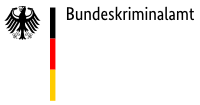
 Characteristic diffraction pattern of crystalline material. The orange-yellow circular segments illustrate the diffracted X-ray quanta measured by the detector. Its evaluation results in the formation of the blue pattern, which, similar to a “fingerprint”, can then be used to identify the crystalline components.
Characteristic diffraction pattern of crystalline material. The orange-yellow circular segments illustrate the diffracted X-ray quanta measured by the detector. Its evaluation results in the formation of the blue pattern, which, similar to a “fingerprint”, can then be used to identify the crystalline components.
A convenient method of analysis for the identification of crystalline material, e.g. explosives and/or their components, is that of X-ray diffraction. With this non-destructive means of analysis, the material to be examined is exposed to monochromatic X-rays. Thereby, due to the crystalline nature of most explosives, a diffraction pattern representing the material’s crystalline structure is created, which can be used, similar to a "fingerprint", for the identification of the components.
Computer-aided comparison of the sample’s diffraction pattern with currently over 200,000 entries in a reference pattern database supply initial suggestions for the identification of possible components of the sample material. These suggestions are checked and evaluated by forensic experts.
In addition, by including the diffraction patterns of explosives not yet contained in the reference pattern collection, the identification power of this method is being constantly extended and thus adapted to the challenges of modern forensic science. Therefore, few milligrams of secured evidence material are sufficient to obtain - within the shortest time - clear information about its composition.
